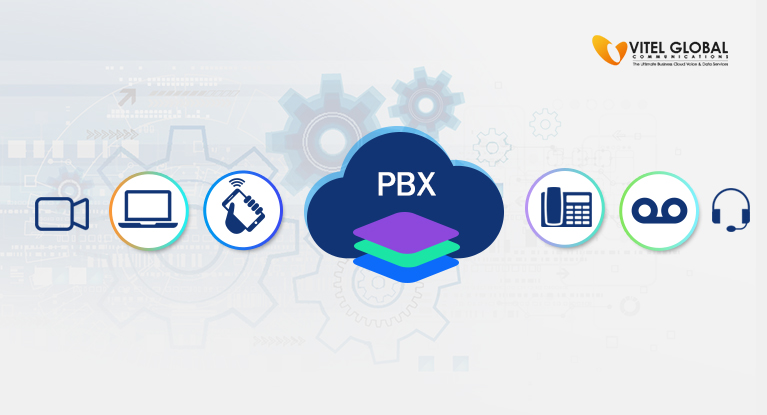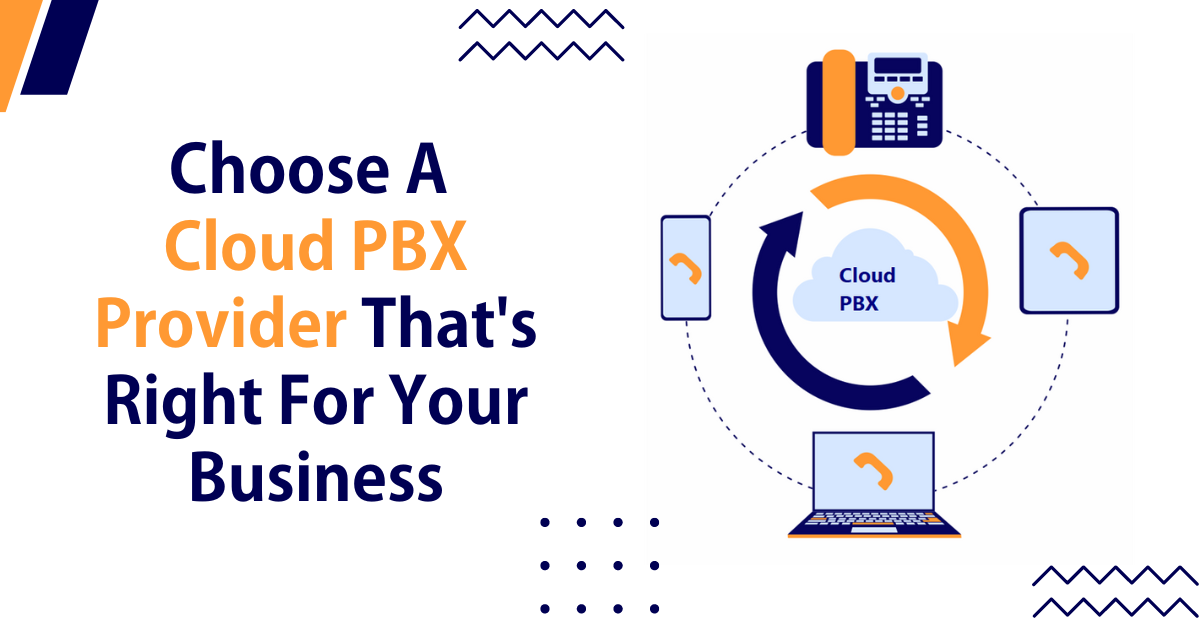The Complete Guide to PBX Phone Systems: Features, Benefits, and Types
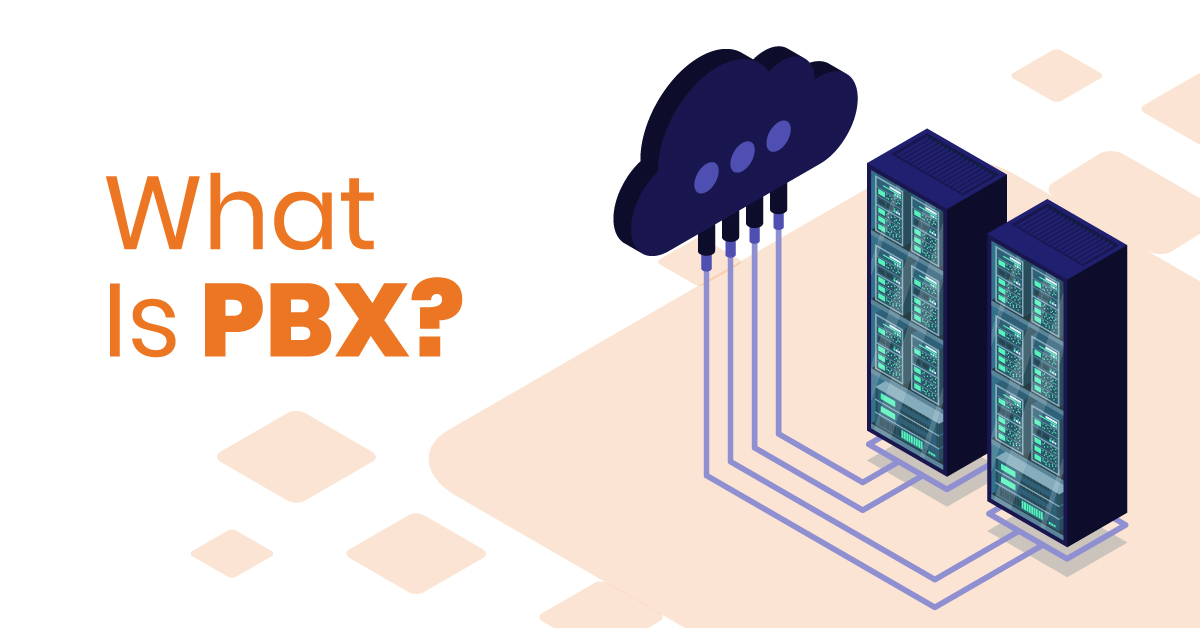
7 min read
Table of Contents
A PBX (Private Branch Exchange) phone system acts as a business phone network – it handles calls between teams and with customers or associates. This helps keep communication clear plus orderly. A PBX system helps business operations run efficiently and helps your team collaborate better.
Explores the use of the PBX phone system, its features, and the advantages it provides. Let’s also go through the various types of PBX systems, which will help businesses opt for the best phone system for their organization.
Key Takeaways
- PBX systems give businesses a private network to manage calls inside the company and with clients, helping everything run more smoothly.
- The three main types of PBX systems are Traditional, IP, and Cloud-Based. Each one is designed to suit different kinds of business needs.
- A PBX system can help lower costs, grow with your business, and make communication easier and faster than older phone setups.
What is a PBX Phone System?
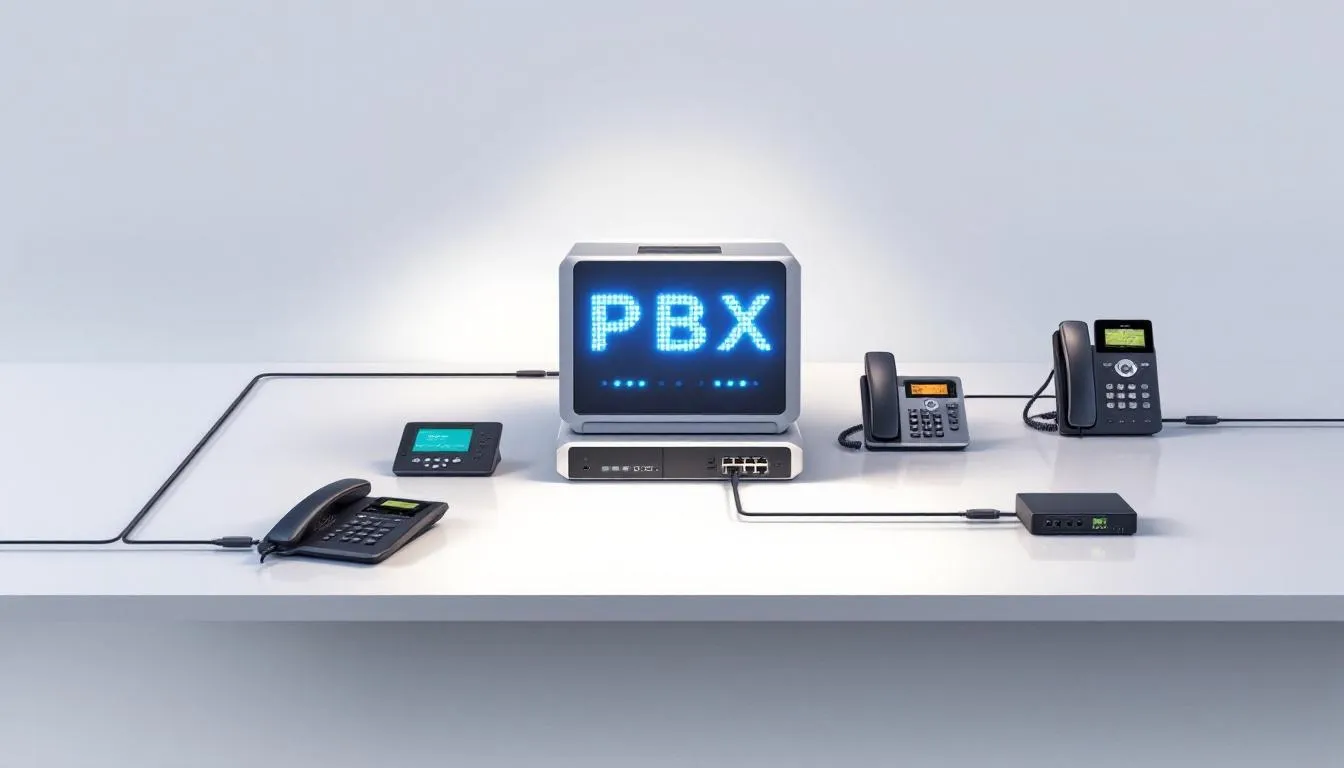
PBX stands for Private Branch Exchange- a technology that manages business communication. Think of it as your company’s private telephone network that connects different phones inside your office and handles calls from outside.
The main function of a private branch exchange or PBX system is to direct calls to the right person or department for smoother communication and support.
PBX systems connect all the phones within a business. This makes it easier for employees to communicate internally and handle calls from clients or partners. It results in better teams collaborating, making sure clients reach the right person without excessive delays.
PBX systems also offer some useful features like voicemail, call forwarding, and call conferencing. These features help in responding faster to clients and working efficiently.
Key Features of PBX Systems
Modern PBX system offers several features like managing several lines at once, call routing, and voicemail. They help direct calls so no customer is left waiting too long. Businesses can handle high-volume calls with multiple lines and trunk lines at once, making sure customers aren’t kept on hold for too long.
Modern PBX systems come with helpful tools like call transfer, playing recorded messages, and hosting group calls. These tools make it easier to manage business calls. You also get features like voicemail, custom greetings, and messages that notify users about new messages and voicemail.
The auto attendant guides callers through options to reach the right team. A good virtual PBX solution adds to this convenience.
Types of PBX Phone Systems
There are three major types of PBX phone systems- Traditional PBX, IP PBX, along Cloud-Based PBX. Each system has benefits, and knowing the differences helps a company choose the right one.
A traditional PBX system uses office landlines and equipment. An IP PBX uses the internet for phone calls, which offers more flexibility and costs less. Cloud-Based PBX operates from another location. This makes it simpler to manage and also scale if required.
1. Traditional PBX Systems
Traditional PBX systems work by:
- Connecting to landlines (PSTN) for outside calls.
- Using physical wiring and desk phones (analog phones).
- Being strong and reliable, but needing regular maintenance.
- Offering basic features like call holding and greetings, but not voicemail or auto attendants.
- Needing equipment on-site, which can limit flexibility compared to newer options.
Some businesses choose hybrid systems that mix traditional hardware with internet-based technology (VoIP). This gives them the dependability of old systems with the added benefits of digital features.
2. IP PBX Systems
IP PBX systems handle calls over the Internet rather than using old phone lines. They connect through network cables, making it easy to work with other office systems. This option is often cheaper and simpler to grow with your business.
IP PBX systems include:
- Ring groups
- Queues
- Digital receptionists
- Voicemail
- Call reports
They make it easy to add new lines when you hire more people. And because they cost less to run, they’re a smart pick for many businesses.
3. Cloud-Based PBX Systems
Cloud PBX systems make it simple to change how many lines you have as your needs shift. This helps businesses with teams in different places stay connected easily.
Since a service provider runs the system off-site, updates and fixes happen without your IT team doing extra work. Cloud systems also help save money over time by cutting down on maintenance costs while still giving you plenty of control.
Benefits of Implementing a PBX Phone System
There are many benefits of using the PBX phone systems, including:
- Free internal calls
- Requiring fewer external lines, which reduces communication expenses
- VoIP systems offer more cost-efficient options for long-distance communication compared to traditional PBX systems
PBX systems also let businesses adapt quickly to changing requirements. You can add or remove users as your company grows. So you’re not stuck with tools/technology you don’t need.
Features like voicemail and call forwarding help keep business operations running smoothly. PBX solutions have the ability to integrate with various communication channels like video calls and instant messaging. This enhances your overall business communication.
Choosing the Right PBX System for Your Business
Picking the best PBX system means thinking about what your business needs today and in the future. Small businesses should look beyond basic calling and think about how they plan to grow. This helps pick a system that won’t need replacing as soon as the business expands.
VoIP systems work well for small businesses because they’re simple to set up and grow. They don’t need a big IT team to manage, and many providers include support.
Make sure adding new lines or linking with tools like your CRM is easy. This makes daily work faster and keeps your team on track.
Setting Up Your PBX System
Setting up the PBX system depends on the type and form you choose.
1. Traditional PBX
- Needs special hardware like a PBX box and phone connectors.
- Requires space for the equipment.
- Needs careful setup to avoid signal problems.
2. Cloud PBX
- Needs only devices that connect to the internet.
- Can be ready to use within minutes.
- Comes with a simple setup guide and dashboard.
Proper planning and security measures are crucial during the migration process. This includes:
- Updating security protocols to protect against VoIP vulnerabilities
- Implementing phased migration strategies to manage the transition effectively
- Providing staff training to ensure employees can adapt to the new system and utilize its advanced functionalities.
Make sure to update security settings and train your team to use the new system. This keeps your data safe and helps everyone adjust to the change.
Advanced Features of Modern PBX Systems
Modern PBX systems offer:
- A unified platform for calls, emails, and chats.
- Smart call handling that sends calls to the right person or group.
- Integral dashboards that show call data in real time to track your team’s worksheet.
- Back-up tools to keep communication going in case of problems.
- Language tools that help with calls from customers who speak different languages.
PBX Use Cases
PBX systems are used across various industries to enhance communication infrastructure.
- Retail: Makes sure customers reach the right sales representatives.
- Healthcare: Helps doctors and departments talk to each other quickly.
- Contact centers: Manage large numbers of calls with queues and auto replies.
- Hotels: Support guest and staff communication.
- Manufacturing: Keeps production and office teams connected.
Transitioning from Legacy Systems to PBX
Old systems like TDM don’t work well with today’s web and mobile communication. That’s why many businesses are moving to PBX systems. Cloud PBX offers more flexibility and better tools.
Switching to cloud PBX may seem tricky. But many service providers help businesses in migrating to PBX smoothly with minimal downtime. These on-site to cloud migration service providers assist businesses in effectively transitioning from traditional phone systems to a cloud PBX system. This helps businesses keep up with the evolution of tech and stay competitive.
PBX vs. VoIP: Which is Better for Your Business?
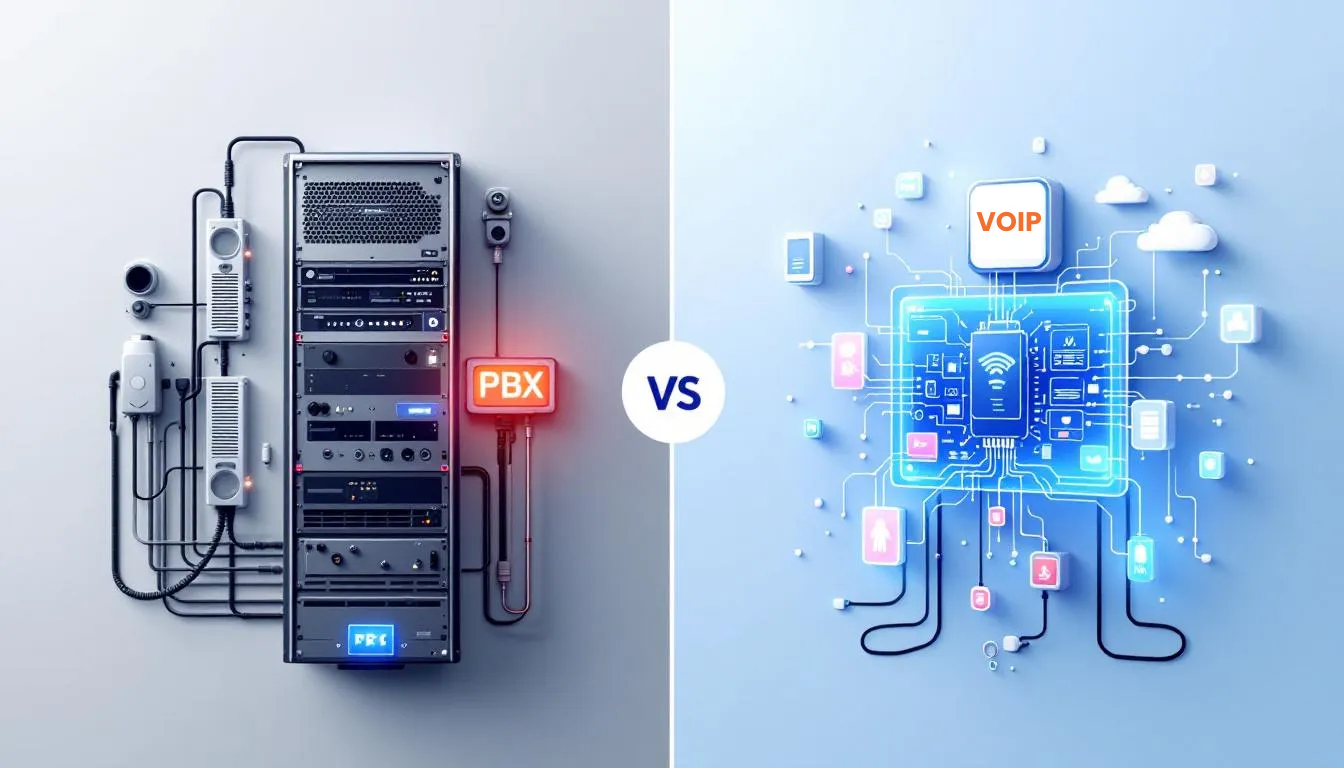
When deciding between PBX and VoIP:
- IP PBX often costs less, especially for long-distance calls.
- If you’ve already invested a lot in PBX, switching may not make sense right away.
- VoIP depends on internet strength, so you’ll need a solid connection.
- VoIP security needs to be kept up with updates and protection measures.
Your choice will depend on your budget, company size, and how you want to handle calls.
Common Misconceptions About PBX Systems
Some think PBX systems are too complex or expensive. But modern PBX options are easy to use and can save money, especially cloud PBX.
Others believe PBX systems don’t fit with modern communication. In fact, PBX systems today work well with VoIP and other platforms and offer features that suit businesses of any size.
Summary
PBX phone systems are a critical component of modern business communication. They offer various smart features that help teams work better and save on business expenses. Whether you choose Traditional, IP, or Cloud PBX, you can always find a phone system that suits your business.
Advanced PBX systems will help businesses stay connected and competitive, even as technology keeps evolving rapidly.
Vitel Global: The smarter PBX Solution for Modern Businesses.
Frequently Asked Questions
1. What is a PBX phone system?
A PBX phone system, or Private Branch Exchange, is like a personal telephone network. It manages high-volume internal and external calls efficiently with ease. The PBX phone system helps employees and clients stay connected.
2. What are the key features of PBX systems?
Multiple lines, call routing, voicemail, call transferring, conferencing, and auto attendants etc., are some of the key features of modern PBX systems. These features help in improved business communication.
3. What are the different types of PBX phone systems?
PBX phone systems can be classified into various forms. But it is categorized mainly into three: Traditional PBX, IP PBX, and Cloud PBX. They all offer unique features that are a better fit for different business requirements.
4. How do I choose the right PBX system for my business?
Selecting the right PBX phone system is quite easy and simple. Check out your calling needs, future business goals, and tech skills your organization holds. One should always opt for a system that can scale with you and integrate with your existing tools.
5. What are the benefits of implementing a PBX phone system?
PBX phone system offers multiple benefits over traditional phones. It reduces expenses, helps you scale, adds flexibility, and gives you better mechanisms for managing calls.
Published: June 27th, 2025
Subscribe to Our Latest Updates
Get monthly product and feature updates, the latest industry news, and more!


